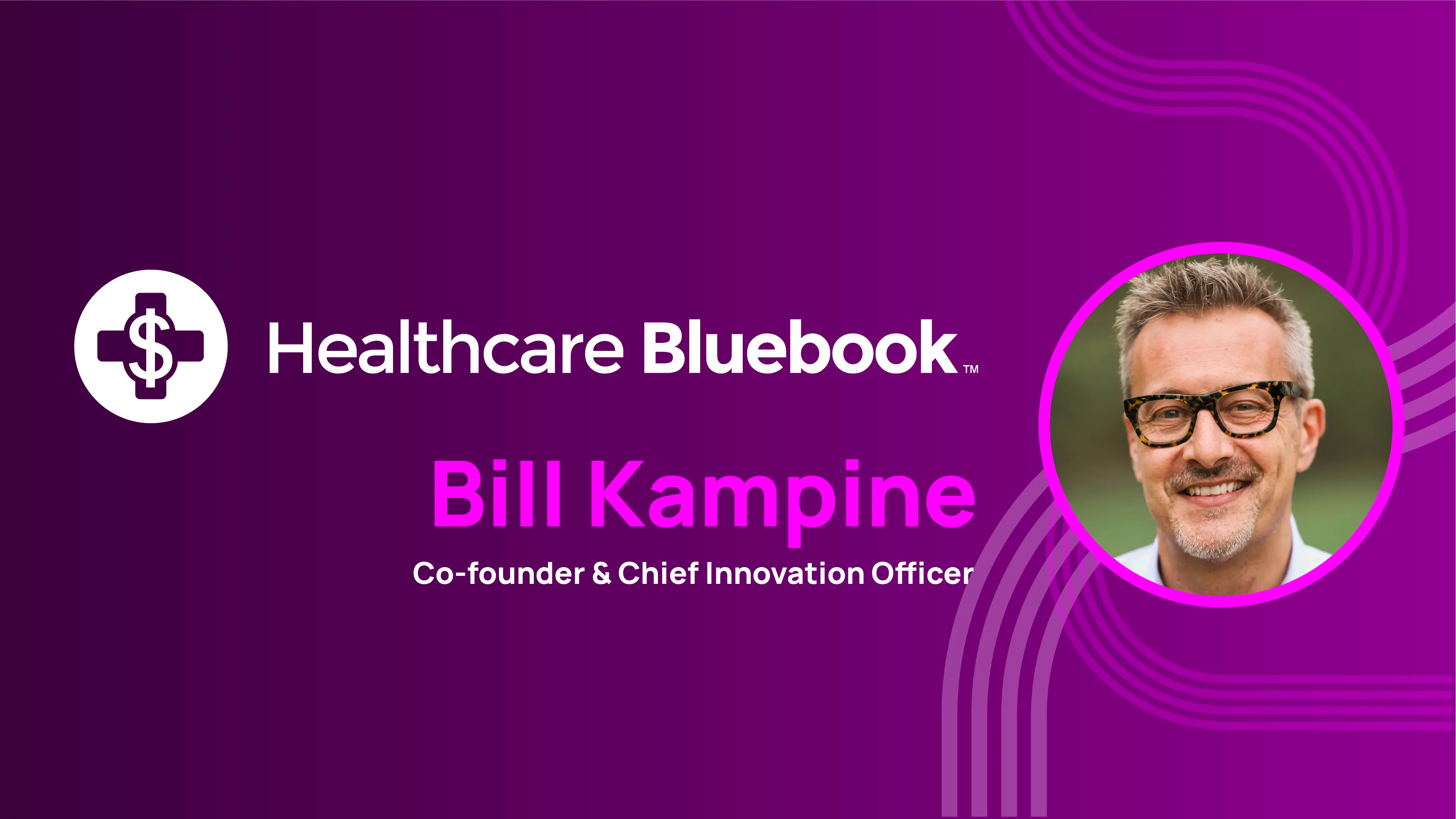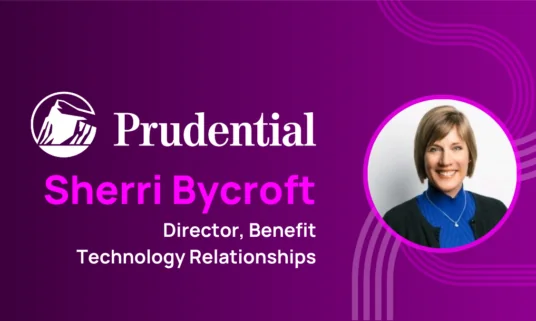Ideon Blog
August 24, 2022
By: Ideon
Guiding employees to high-quality, affordable healthcare: A Q&A with Healthcare Bluebook

Historically, consumers have found it challenging to master the complexities of the U.S. healthcare system, especially in regard to finding high-quality, in-network care at an affordable cost.
But a slew of innovative technology companies are changing all that. Healthcare-navigation platforms are revolutionizing the consumer experience, providing data-driven tech and digital-concierge services that enable people to make more informed decisions and get better value.
One such company is Healthcare Bluebook, a leading healthcare quality and price navigation platform. Ideon spoke with Bill Kampine, Healthcare Bluebook’s co-founder and Chief Innovation Officer, about the rise of consumer-centric healthcare tools, the data behind great digital experiences, and the new Transparency in Coverage regulations.
The below interview has been condensed and edited for clarity.
IDEON: What is Healthcare Bluebook’s core business?
BILL KAMPINE: Since 2007, we’ve had a simple purpose — to protect patients by helping them understand differences in price and quality within networks, and to provide digital tools that enable consumers to compare providers and get better value. With more information, consumers can make better choices among the options that are available within their network. Today, we’re one of the largest providers of healthcare price and quality navigation solutions.
Who uses your platform?
Our customers are large self-insured employers, state and local governments, TPAs, and other organizations. Overall, more than five million employees use our platform for healthcare navigation.
How does Healthcare Bluebook’s technology help those employees?
Healthcare is incredibly complex, difficult to navigate, and most employees don’t understand the industry’s language and jargon. We make it easy to overcome those challenges. Our intuitive user experience makes it easy for people to compare and locate providers and facilities, and understand the cost implications of their healthcare decisions.
Our platform also incorporates comprehensive, outcomes-based quality information. We use data-driven methodology to score hospitals, doctors, and outpatient facilities based on standardized outcome metrics. This allows patients to choose providers using quality information, in addition to cost data.
How do you encourage employees to utilize the navigation tools available to them?
Innovative technology and access to data are great, but engagement is equally as important. We wrap cutting-edge digital engagement and concierge support around our solutions, making it easy for members to make sound decisions, whether they’re using a computer or on a mobile device.
Additionally, we work with our clients to align benefits with the desired outcome — use of high value care. We do this through benefit design and shared-savings incentives that reward members when they make good choices on care.
What types of data enable employees to find quality healthcare at affordable costs?
When I think about the transparency rules and other legislation, it has focused on the price of services. But to get value as a consumer, cost is only one half of the equation. For real transparency—to help members get better value—you need to provide cost and quality information. Our view is that those are two distinct pieces of information.
It’s also important to help consumers understand where they are against their deductible, their accumulator, and have out-of-pocket information. Even when deductibles and out-of-pocket maximums have been met, it’s important for people to understand their options from a cost and quality standpoint.
Is provider-network data—information about which doctors and facilities participate in which networks—integrated into your user experience?
Yes, and it’s hugely important. Our goal is to help consumers review all of their in-network options and steer them to high-quality and high-value care. We also want consumers, if they’re making an in-network vs. out-of-network decision, to understand the cost implications of choosing an out-of-network provider. Consumers should easily understand which providers are in-network and the potential financial significance of selecting out-of-network care.
What are some typical questions that healthcare navigation platforms answer for consumers?
The question is: I need a provider. Can I look them up easily? Importantly, which providers are in-network? Do they specialize in the service I need? What should I reasonably pay for a service and does a provider charge a fair price? Where am I being referred for care, and what is the cost at that location? Can I find or ask for alternatives that can lower my cost? What is the general overall quality of outcomes for the provider’s patients?
Within Bluebook, we provide information to help people make better decisions at each stage of the care pathway — healthcare navigation platforms should deliver that information in an intuitive, understandable way.
How is Healthcare Bluebook reacting to the new Transparency in Coverage regulations?
As a company, Healthcare Bluebook has planned for how these regulations, including the Transparency in Coverage Rules and the No Surprises Act, will impact our clients. Since Jan. 2021 we’ve had clients live on initial prototypes that incorporate these new requirements into the Healthcare Bluebook platform. The early and ongoing development and testing ensures that our employer and TPA clients will have access to fully compliant Bluebook solutions for the 500 shoppable services required on January 1st, 2023 and full service coverage on January 1, 2024.
Looking ahead, will the new transparency policies drive more innovation in the benefits ecosystem?
I firmly believe innovations in using healthcare price information will come from third-party technology companies like Healthcare Bluebook and other digital platforms, rather than the traditional stakeholders.
For years, carriers, hospitals, and provider systems resisted transparency and disclosing this information to consumers. It’s the third-party technology companies that are extremely focused on helping employers and consumers get better value — innovations will come from those companies, and I anticipate entirely new platforms will be developed around the newly available transparency data.
What about Covid-19? Has the pandemic impacted your business?
Absolutely, there’s heightened employee demand for intuitive healthcare navigation tools. The pandemic introduced patients, on a large scale, to telehealth and remote care delivery. And most patients really enjoyed that experience. Telehealth is here to stay, and it’s shaped consumers’ expectations about convenience and technology in healthcare. One consequence of that is higher levels of digital engagement and utilization of navigation tools — consumers have greater expectations of convenience and support, especially around finding the care that they need. Those expectations have impacted our thinking and how we better engage and support patients.
Interested in learning more about Ideon’s provider-network data solutions? Check out our industry-leading APIs or connect with our sales team.


